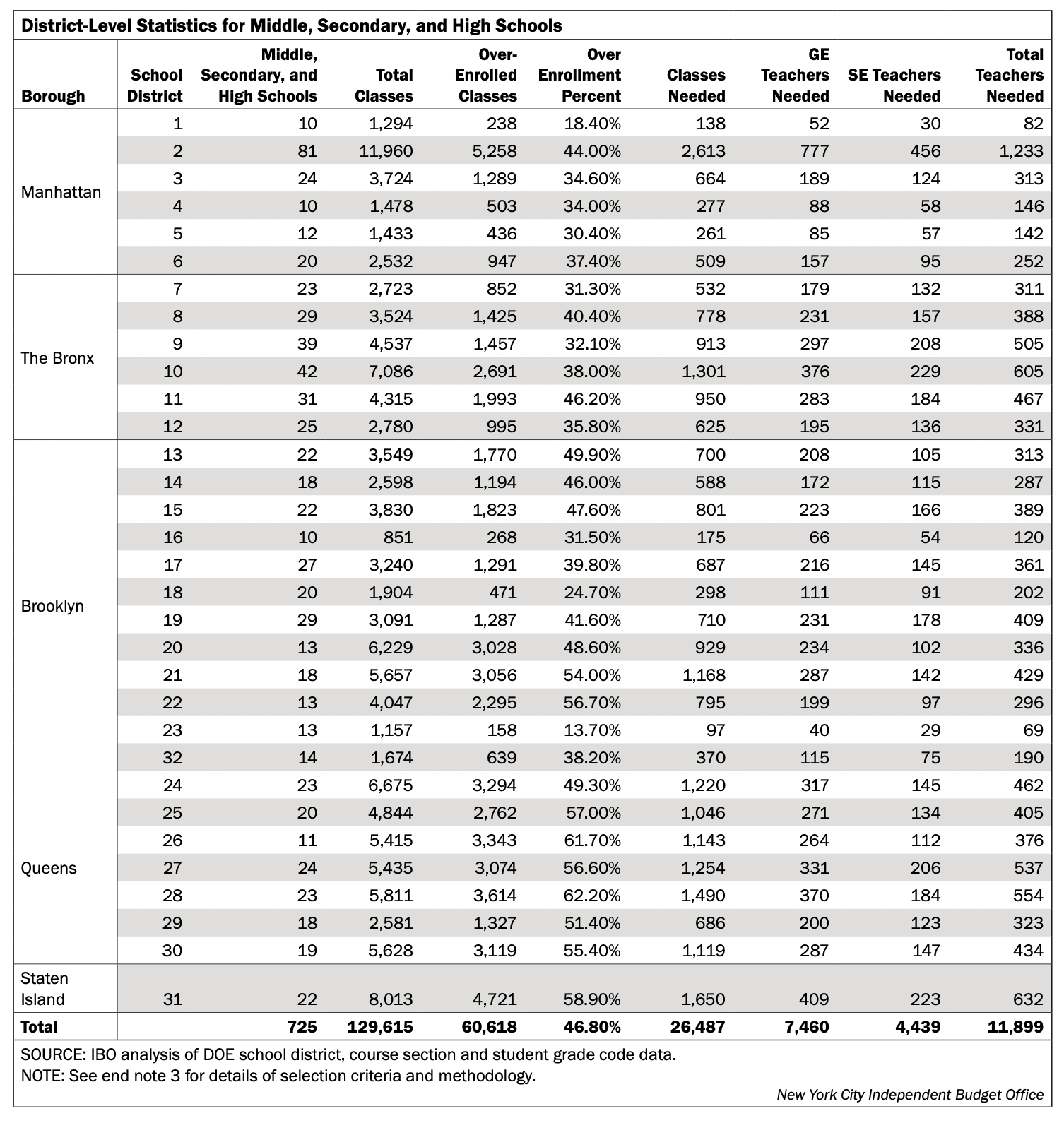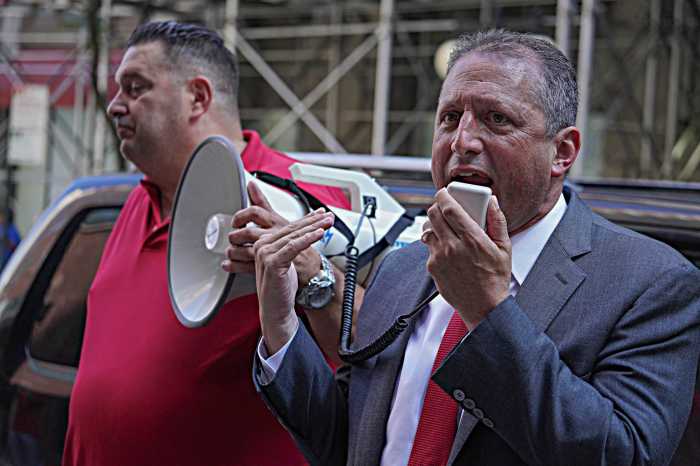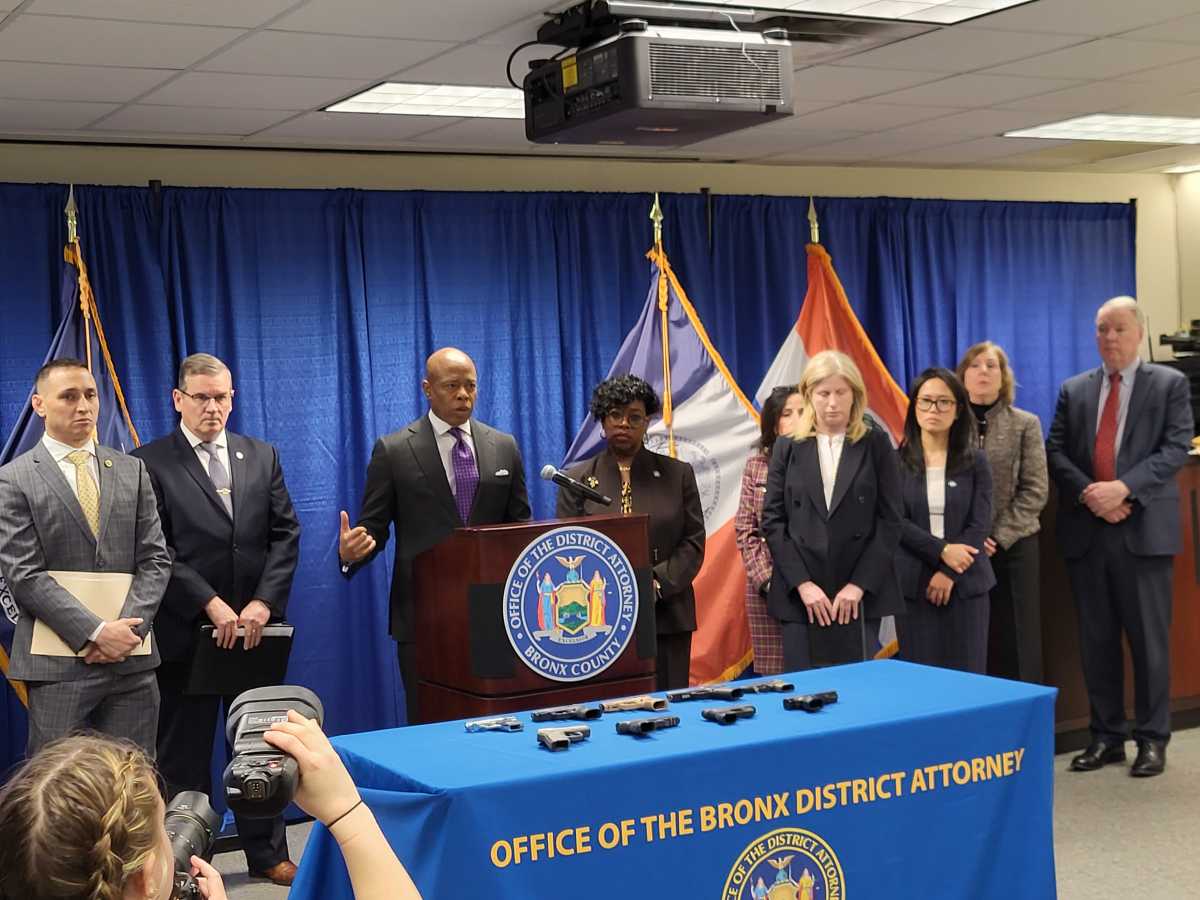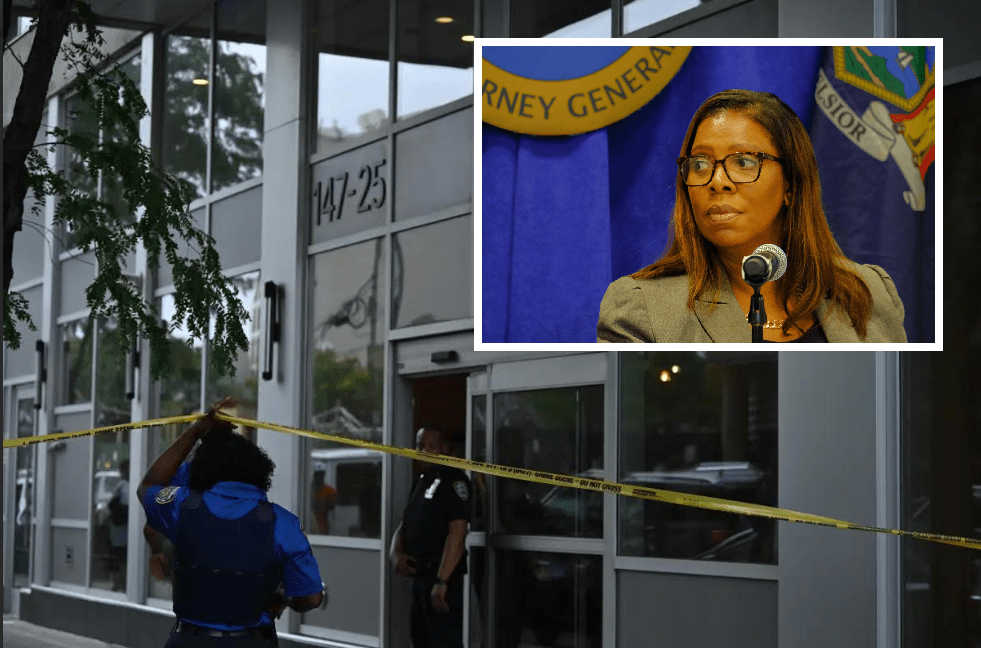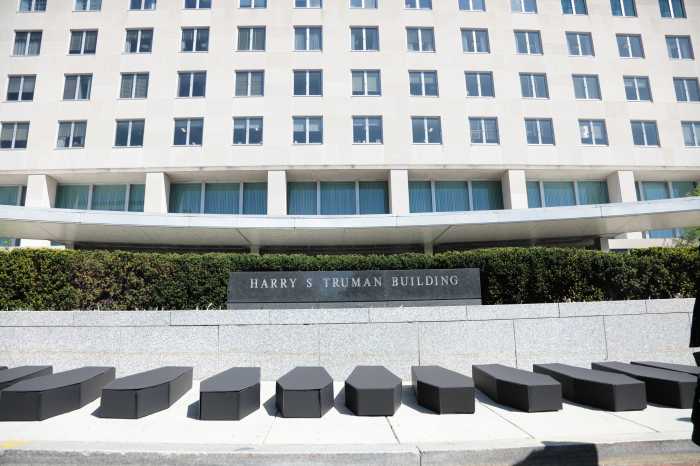Smaller class sizes from kindergarten through high school, now mandated under state law, could cost New York City up to $1.9 billion annually, according to an Independent Budget Office (IBO) report.
IBO Director Louisa Chafee said in a statement that the July 12 report, “How Would The New Limits To Class Sizes Affect New York City Schools?,” was meant to show what a new state law restricting class sizes, signed by Governor Kathy Hochul last September, would look like in practice.
“Our analysis provided some caveats about how implementation of legislation to achieve this educational policy goal may come with fiscal constraints and hiring challenges,” Chafee said. “Our report underscores the importance of careful long-range planning to achieve desired outcomes.”
The law, Senate Bill 9460/Assembly Bill A10498, mandates that kindergarten through third grade classes are limited to 20 students; fourth through eighth grade classes are limited to 23 students; and high school classes are limited to 25 students. Large instruction classes, such as physical education and music, are limited to 40 students.
The new, classroom size law will be implemented over five years starting this September and would require hiring tens of thousands — roughly 17,700 — of teachers, according to the report. The cost of making this happen could be at least $1.6 billion and up to $1.9 billion annually. Two-thirds of that cost would potentially finance hiring those teachers for middle, secondary, and high schools, where the need is greatest, according to the report.
The report also examined class sizes of around 90% of public schools in New York City and found that 53% of first through sixth grade classrooms — and particularly in first through third grade — would be considered over-enrolled under the bill’s standards.
“Only 47 of 661 early childhood and elementary schools would not have had over-enrolled classes under the new rules,” the report stated.
The average class size in New York City dropped from 24.4 students during the 2021-22 school year to 24 students per class across all grades in the 2022-23 school year, per a DOE report published this past February. The largest class sizes — with around 26 students — were eighth and seventh grade classrooms.
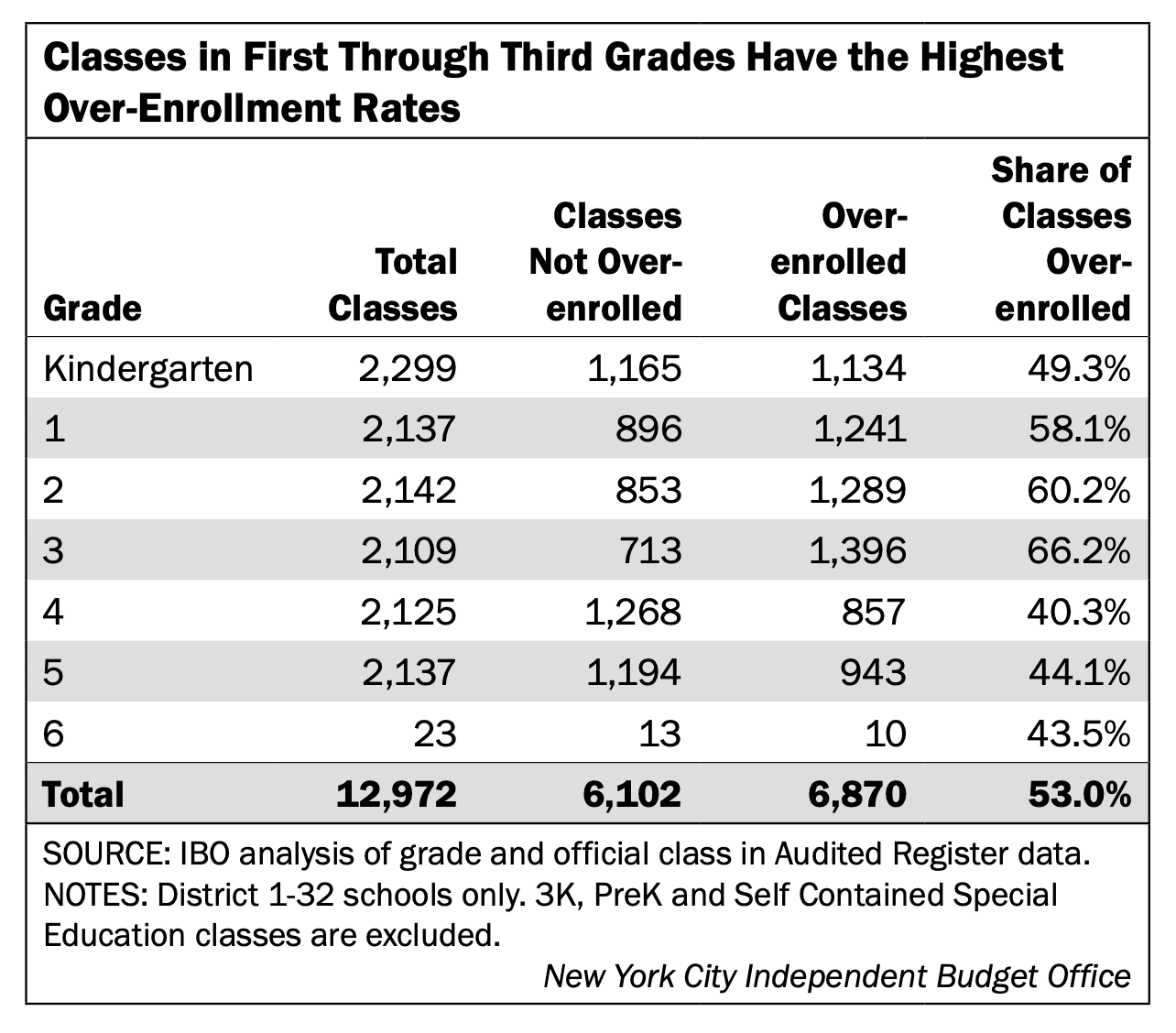
A ‘complex’ problem for upper grades
Still, middle and high schools would face extra challenges to maintain the selection of courses they currently offered, if class sizes are to be reduced. The IBO called the course of action “complex” and suggested that “school leaders may focus resources on core courses, reducing the number of electives and AP courses.”
Queens, in particular, could potentially have the highest over-enrollment in its school districts. The IBO also found that over-enrollment was more prevalent in wealthier schools.
This could lead to families electing to send their students to a different school if the availability of offerings changes under the new state law, according to the IBO. From that, parents and students might be more interested in schools offering “more enriched programming.”
The city Department of Education had released a draft plan this past May devising how the administration would meet reduced class size targets. The final plan is due in the fall.
Manhattan State Senator Robert Jackson had requested the report as a sponsor of Senate Bill S6296A, which was introduced in the 2021-22 legislative session. The bill requires class size reductions in school districts in cities with a population of one million people and more.
In a statement, Jackson said the report will serve as a valuable tool within an “enduring battle intrinsic to the Campaign for Fiscal Equity” which had secured $16 billion for school construction, teacher recruitment, and smaller class sizes.
“The data in this IBO report serve as valuable tools to inform a plan that advances the reduction of class size in New York City,” Jackson said.
Amidst a period of a national teacher shortage, reduced school budget, declining enrollment, and expiring COVID-10 relief funds, the city would need to hire additional teachers for the last three years to be comply with state law. There might also be a need for additional capital costs to increase classroom space to accommodate additional classes.
“Hiring new teachers with less experience could negatively impact the desired outcome of lowering class sizes,” the report stated. “The City plans to reduce DOE’s budgeted headcount over the next few years, not increase it, but the new law may force a change in that plan.”
This means that administrators and union leaders at schools with over-enrolled classrooms will “have to decide how to comply with the new class size regulations” starting in the 2025-26 school year.
There are currently plans for new projects and seat additions that involves 24,000 elementary and middle school seats in 20 school districts, as well as 4,100 high school seats in Brooklyn and Queens.
Some classes are excluded from the law, including 3-K, Pre-K, and classes serving students with disabilities, because they already have smaller class size caps.
If the city fails to comply with the new law, this could jeopardize state Contract for Excellence funds, according to the IBO.

